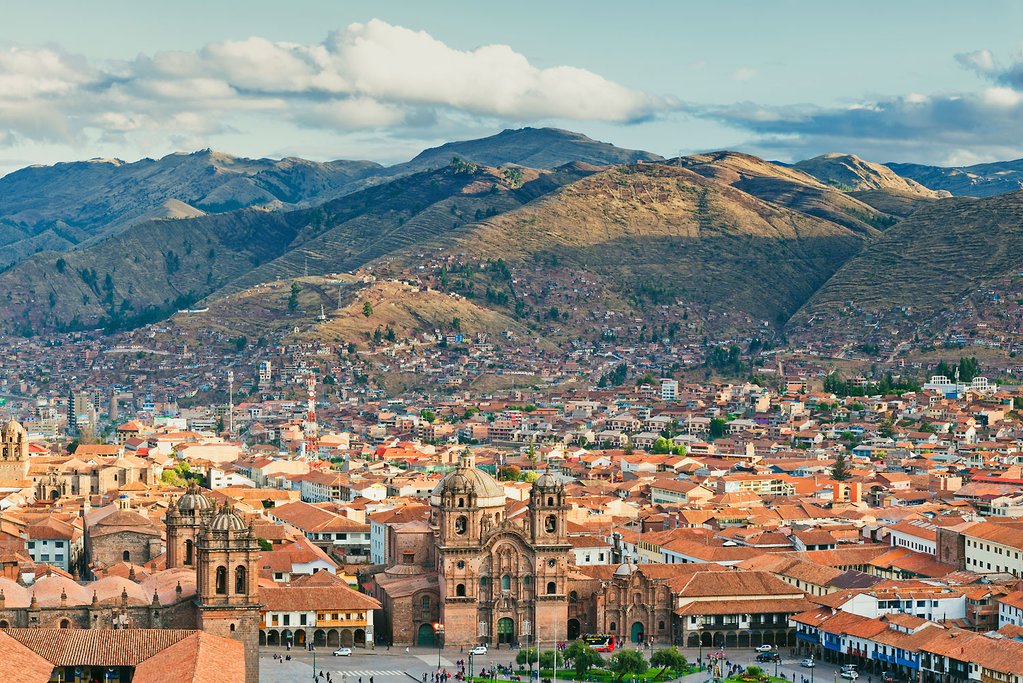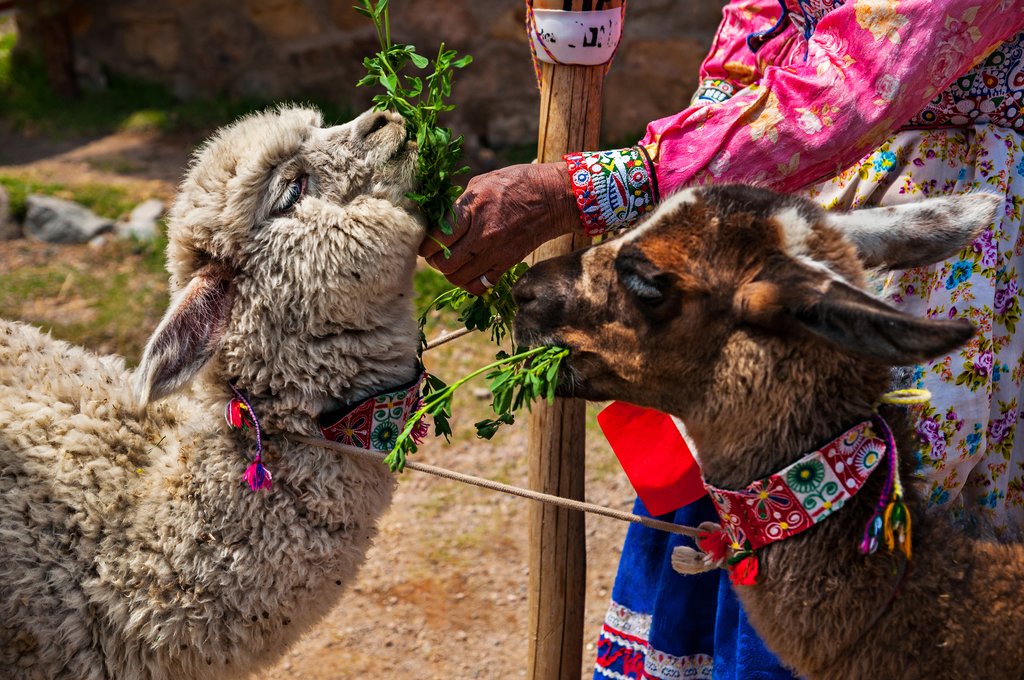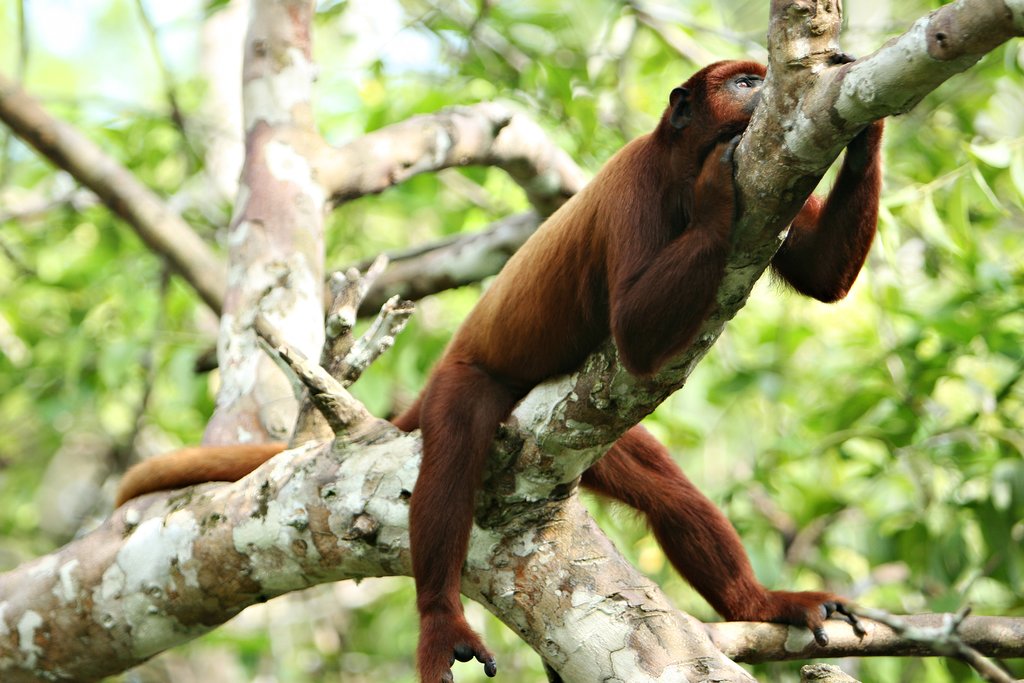Highlights
- Walk the streets of the ancient Incan capital of Cusco
- Explore the beauty and culture of the Sacred Valley
- Hike the legendary Inca Trail
- Spend a day immersed in the history of Machu Picchu
- Spot Amazonian wildlife like macaws, cayman, anaconda, and tapir
Brief Itinerary
| Day | Highlights | Overnight |
|---|---|---|
| Day 1 | Arrival in Lima | Lima |
| Day 2 | Lima City & Food Tour | Lima |
| Day 3 | Fly to Cusco - Free day in the City | Cusco |
| Day 4 | Sacred Valley Tour: Cusco - Pisac - Urabamba - Ollantaytambo - Cusco | Cusco |
| Day 5 | Inca Trail Day 1/4: Cusco to Yuncachimpa | Yuncachimpa |
| Day 6 | Inca Trail Day 2/4: Yuncachimpa - Warmihuañusca Pass - Chaquicocha | Chaquicocha |
| Day 7 | Inca Trail Day 3/4: Chaquicocha - Phuyupatamarca - Wiñayhuayna | Wiñayhuayna |
| Day 8 | Inca Trail Day 4/4: Wiñayhuayna - Machu Picchu - Cusco | Cusco |
| Day 9 | Into the Amazon: Cusco - Puerto Maldonado - Refugio Amazonas Lodge | Puerto Maldonado |
| Day 10 | Jungle Excursions - Tres Chimbadas, Parrot Clay Lick, Botany Tour | Puerto Maldonado |
| Day 11 | Puerto Maldonado - Lima | Lima |
Detailed Itinerary
Day 1: Arrival in Lima

¡Bienvenidos! Welcome to Lima, Peru's largest city and central metropolitan hub, and home to one-third of the country's population. Located at the site of a pre-Columbian indigenous Ychsma settlement, which was conquered by the Inca empire in the 15th century and later by the Spanish conquistadores, Lima has a fascinating history and a diverse mix of cultures. Amerindian, European, Afro-Peruvian, and Asian—especially Chinese and Japanese—influences make Lima a dynamic and exciting city to explore.
Lima's breezy location on the Pacific Ocean and mild desert climate make it a great city for exploring on foot. Head downtown to mingle with locals, stretch your legs, and grab a bite to eat in one of the city's many award-winning restaurants.
Suggested activities include:
- Explore the historic center of Lima, a UNESCO World Heritage Site packed with fascinating Spanish architecture. Start with a scenic tour of the colonial downtown, which emanates from the main square. Stroll over to the 16th-century Cathedral, which took 80 years to construct and was built in the grandiose style of the Spanish Empire.
- Visit the Casa Aliaga, a colonial mansion granted by chief conquistador Francisco Pizarro to Jerónimo de Aliaga, one of his captains, in 1535. This is the only house from that era that still belongs to the same family.
- Stroll around the Pueblo Libre district to the privately owned Larco Museum of pre-Columbian art, housed in a beautifully restored viceregal mansion built over a 7th-century pre-Columbian pyramid. The museum boasts a vast pre-Colonial collection of gold and silver artifacts.
- In the evening, head to the eclectic "Love Park" in the upscale coastal district of Miraflores, where you can admire a huge kissing statue and beautiful mosaic walls. The park is built on the cliffs of Chorrillos and is a perfect place to enjoy a spectacular sunset over the Pacific.
- Enjoy a nightcap at an open-air café or restaurant in the diverse Miraflores neighborhood.
Day 2: Lima City & Food Tour

Spend the day discovering Lima through its food. With a vibrant combination of Indigenous American, African, Asian, and European culinary influences, Lima is one of the world's most impressive gastronomic centers.
Start early in Lima's historical center with a visit to a local mercado—a fresh food market—to taste local produce and sample spices, fruits, and various baked bread. Taste different types of piscos (a high-proof brandy produced locally in the wine-making regions of Peru and Chile). Attend a cooking class and learn how to make ceviche, a fresh seafood dish marinated with salt and lime juice, and the traditional pisco sour cocktail.
Stop for lunch at one of Lima's top restaurants and enjoy a delicious meal on a patio overlooking the Pacific. Stroll to the bohemian district of Barranco—a popular oceanside neighborhood for artists, tourists, and locals alike—for a relaxed afternoon drinking coffee and sampling Peruvian desserts.
Day 3: Fly to Cusco - Free day in the City

Head to the Lima airport for your transfer flight to Cusco. This ancient city is the former capital of the Inca empire, which reigned from the 13th to 16th centuries after conquering the Killke settlement on the same site.
Remember: you will be 11,000 feet above sea level, so take it easy and remember to drink lots of water. Since Cusco was designed by the Incas as a city for walking, start your exploration of the narrow stone alleyways on foot. Take a walk through the plaza: if the weather is nice, it's a good place to sit on a balcony and have a cup of coca tea while adjusting to the elevation.
Suggested activities include:
- See the Cathedral, the most imposing monument in the central Plaza de Armas and a repository for Cusco's colonial art. Its construction lasted for almost 100 years, beginning in 1560 and ending in 1654.
- Discover the elaborate Puca Pucara ruins—an architectural complex with multiple plazas, baths, aqueducts, walls, and towers. It is believed that the entourage of the Incan emperor used it while he stayed at Tambomachay, the elaborate estate and baths nearby.
- Explore San Blas, an old bohemian quarter famous for its picturesque white walls, blue doors, and creative artisan community.
- Eat lunch at a local Peruvian restaurant and sample local flavors and cooking techniques—crackling pork, pickled vegetables, seasonal flavors, bread baked in earthen ovens, roasted vegetables, and sweet donuts make for a delicious and filling meal.
Day 4: Sacred Valley Tour: Cusco - Pisac - Urabamba - Ollantaytambo - Cusco

Meet your driver in the morning and head to the Sacred Valley, which contains many historical and archaeological sites, small towns, and famous marketplaces.
Your first stop is Pisac, famous for its bustling craft market. The textile artists in this area are renowned for their skill and craftsmanship. From cleaning and harvesting the wool to creating intricate designs, the level of detail and attention in their work is unparalleled. Select from a wide assortment of colors, styles, and designs for gifts and souvenirs to take home with you. Then stop at Urubamba, the largest town in the Sacred Valley, for a traditional lunch and a quick stop to see the remains of an Inca palace.
From here, head to the ancient Incan city of Ollantaytambo. The city's layout, streets, and some homes have been preserved since the time of the Inca empire. Explore the tranquil plaza and surrounding ruins before returning to Cusco for the evening.
Chat with a local specialist who can help organize your trip.
Day 5: Inca Trail Day 1/4: Cusco to Yuncachimpa

Start your morning early, leaving Cusco for the Sacred Valley. Stop briefly in Ollantaytambo for breakfast, then continue to the start of the Inca Trail, where you'll meet the rest of the group before beginning the trek.
Cross the Urubamba River and head uphill for an easy trek: it's a good warm-up for the following days. Reach Miskay by lunchtime and stop for a picnic by a small river. After lunch, explore the nearby archaeological site of Llactapata, then continue the hike to Wayllabamba and ascend to Yuncachimpa, your campsite for the night. Enjoy sweeping views of Willka Weqe Mountain and the surrounding landscape over dinner.
Level of difficulty: Moderate
Hiking time: 6-7 hours
Total distance: 6.8 miles
Day 6: Inca Trail Day 2/4: Yuncachimpa - Warmihuañusca Pass - Chaquicocha

During the second day of hiking on the Inca Trail, you're free to walk at your own pace. Meet back up with the group for short rest breaks and on long ascents, but walk the rest of the day at your own leisure.
Start the day by trekking through the Valley of Llulluchapampa, a steep 1.8-mile hike through humid woodlands. From here, follow the path for another two hours to Warmihuañusca Pass. Translated as "Dead Woman Pass," this section of the hike is the most difficult part of the trail. After a break at the summit, continue the hike down a long and steep descent toward the Pacaymayo River. Cross Runkurakay Pass before reaching Chaquicocha, your campsite for the night. Enjoy the stunning view of the Andes Mountains and relax after a long day on the trail.
Level of difficulty: Challenging
Hiking time: 8-9 hours
Total distance: 9.3 miles
Day 7: Inca Trail Day 3/4: Chaquicocha - Phuyupatamarca - Wiñayhuayna

The third day on the trail brings you through a variety of landscapes and Inca architecture. You will see a change in the ecosystem as you walk into the tropical forest of Wiñaywayna. Pass by several small lakes, through small Inca tunnels, and over a couple of high-altitude passes before reaching the Wiñayhuayna ruins. This elaborately engineered site is built into a steep hillside above the Urubamba River. Two separate building complexes are connected by a series of terraces, which were once used for agriculture. From here, the Inca stairs turn into a zigzagging trail that ascends until you reach a white, red-roofed building—your last campsite.
Level of difficulty: Moderate
Hiking time: 5-6 hours
Total distance: 6.2 miles
Day 8: Inca Trail Day 4/4: Wiñayhuayna - Machu Picchu - Cusco

Today you will get a very early start onto the trail to catch the sunrise over Machu Picchu. After breakfast, head back onto the trail toward Inti Punku (Sun Gate) to watch the sun come up over Machu Picchu and Wayna Picchu. Then descend one hour to the archaeological ruins.
This 15th-century Inca citadel is located at 7,970 feet and is a masterpiece of engineering that served as a sanctuary and retreat for the Incan Emperor Pachacutec and his royal court. Machu Picchu, which means "Old Mountain," is considered a World Heritage Site by UNESCO and is one of the new Seven Wonders of the World.
Built as a seasonal residence for the Inca family, Machu Picchu was rarely home to more than 800 people, and during the royals' absence, just 100 servants would remain at the site to maintain the grounds. Machu Picchu was abandoned 100 years after construction due to the Spanish conquest and remained largely hidden to the outside world until the early 20th century.
Your guide will lead you around the site and explain the different buildings and curious corners of the building complex. Approximately one-third of the site has been reconstructed into its original structure, giving visitors a sense of the grandeur and artistry of the original citadel.
After the tour, explore the site on your own—walk up to the Inca Bridge, discover various buildings within the site, or climb Wayna Picchu for panoramic views. Later, catch a bus down to Aguas Calientes and soak your aches and pains away in the town's hot springs. Depart from Aguas Calientes in the afternoon and make your way back to Cusco, where you'll check in to your hotel for some well-deserved rest.
Level of difficulty: Moderate
Hiking time: 2-3 hours
Total distance: 4.3 miles
Day 9: Into the Amazon: Cusco - Puerto Maldonado - Refugio Amazonas Lodge

This morning you will transfer from your hotel to the Cusco airport for your flight to Puerto Maldonado. An agent will meet you and drive you to luggage storage. Here, all of your extra luggage will be locked away in a secure safe for more convenient boat travel. After a quick walk through the garden for a preview of rainforest plants, it’s time to pack your necessities and travel into the Amazon.
Depart from the Tambopata port on a two-hour boat ride, passing through the community of Infierno Reserve. Eat a packed lunch en route, then watch as the sunlight disappears behind the dense rainforest trees. The boat will take you to your home base for the next few days, the Refugio Amazonas Lodge. The manager will welcome you before giving you an important briefing regarding navigation and security. Then, kick back and relax for the rest of your night after a day of traveling. If you'd prefer to get in a little adventure, you can go on a night boat trip to search for caymans. From the safety of the boat, shine your headlights and flashlights onto the riverbanks to spot their red eyes reflecting in the light.
Day 10: Jungle Excursions - Tres Chimbadas, Parrot Clay Lick, Botany Tour

Today you will explore the lush rainforest around you in a series of short guided adventure treks. Start by heading to Tres Chimbadas, located 30 minutes by boat from the lodge. Explore the lake to search for the resident family of nine giant river otters and other local wildlife, such as cayman, hoatzin, and colorful tropical birds. This tour is best done in the early morning, as otters are most active just after dawn.
Then walk the short 20 minutes from the lodge to the Parrot Clay Lick. Take a comfortable seat behind a secluded blind and watch hundreds of vibrant parrots and parakeets descend onto the river bank to eat the mineral-rich clay. Brightly-colored species like the Yellow-headed Amazon, Blue-headed Parrot, and Dusky Headed Parakeet love to visit this location—and late morning is an ideal time to spot them.
Take a break for lunch, then head 20 minutes down the river to a special ethnobotany trail tour. Designed by the staff of Centro Ñape, a communal organization that derives natural medicines from plants found in the rainforest, this educational program is designed to explain the uses of local Amazonian plants.
After dinner, you'll have the option to go for a night hike during a time when most mammals are active. Listen to the chorus of amphibian calls, and bring a flashlight to try and spot small animals in the vegetation.
Day 11: Puerto Maldonado - Lima

After breakfast, transfer to the airport and fly back to Lima. Spend the afternoon settling in and relaxing in the hotel, or go for a walk in the romantic neighborhoods of Miraflores and Barranco before catching a flight out.
